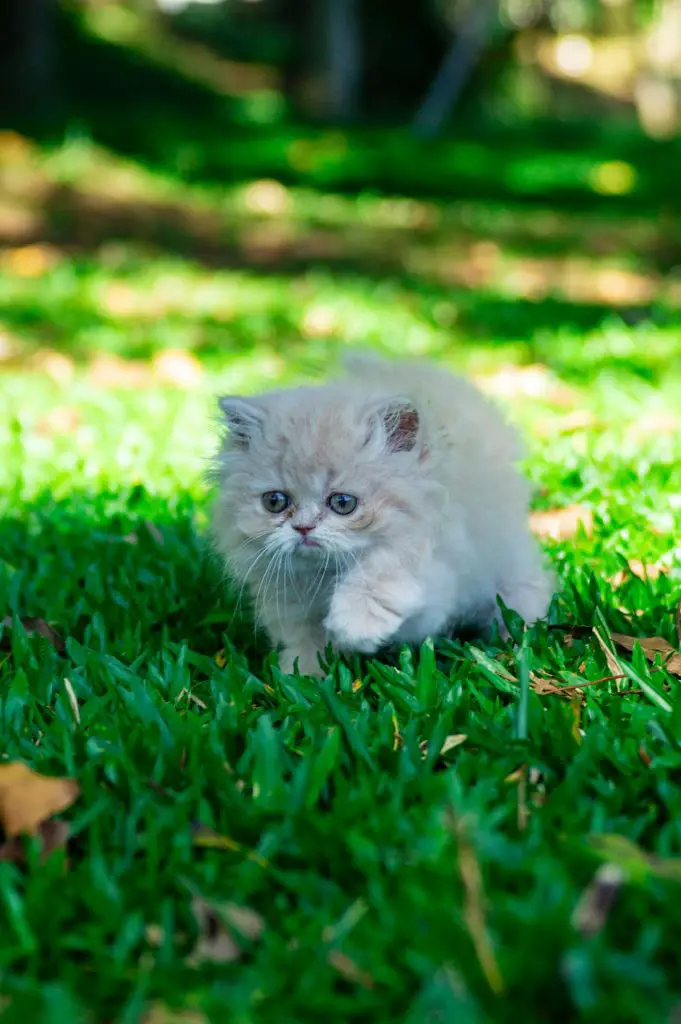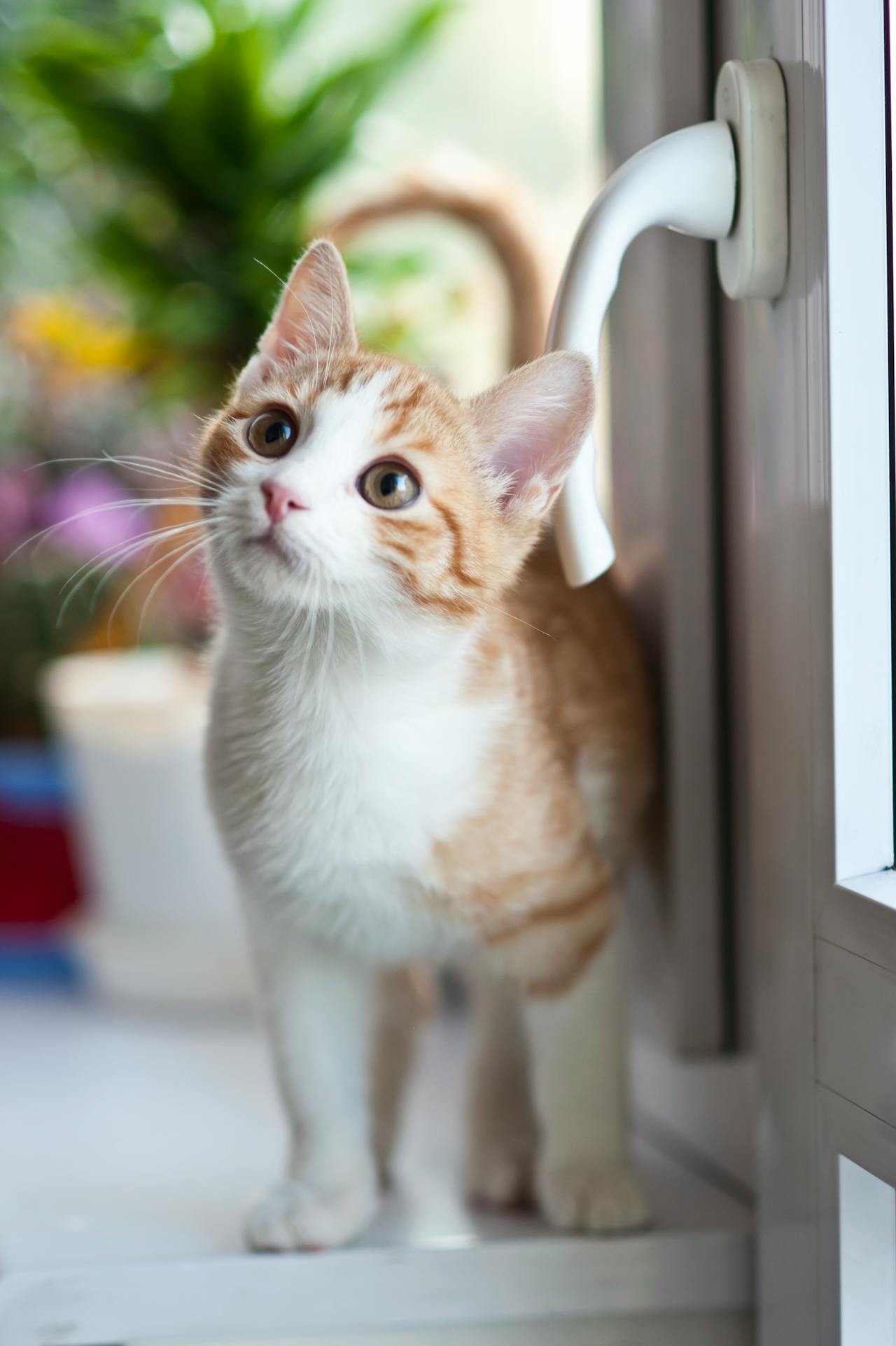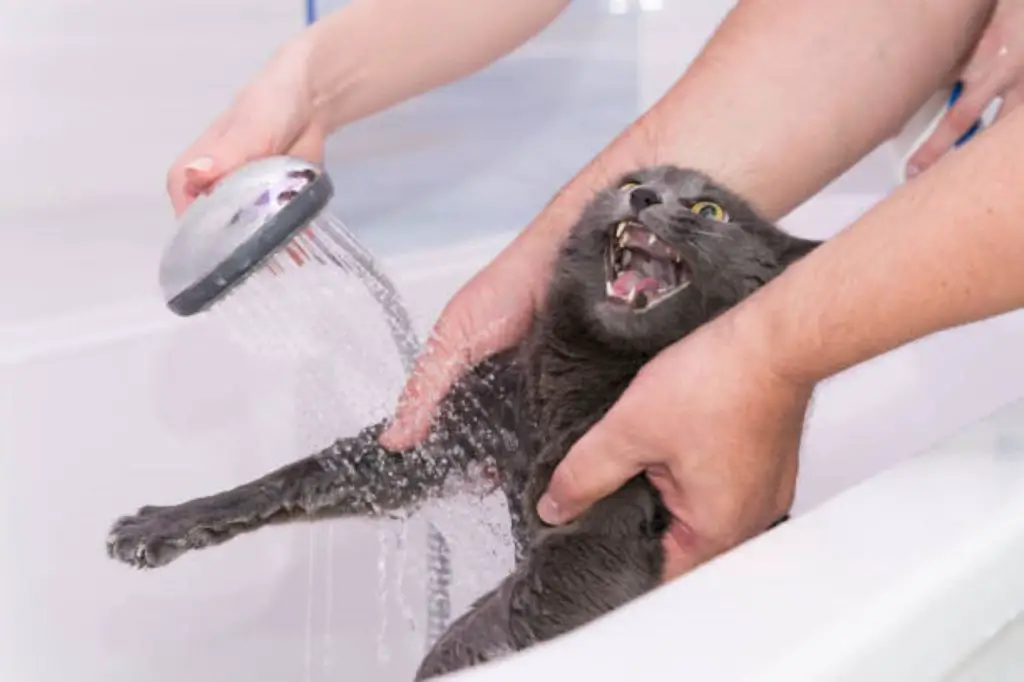
You might be surprised to learn that your feline friend’s aversion to water has its roots in the deserts of ancient Africa and Asia, where their ancestors roamed dry, arid landscapes. As a result, cats evolved unique adaptations that didn’t require them to swim or wade through water. But why, exactly, do these adaptations make modern-day cats so averse to getting wet? Consider the awkward, sodden mess their coat becomes when drenched – it’s just one of several reasons they avoid water. There’s more to this story, and it’s about to get interesting.
Table of Contents
Evolutionary History of Cats

Studying the evolutionary history of cats reveals that their ancestors, emerging in arid desert environments, didn’t need to adapt to aquatic environments to survive, which laid the groundwork for their descendants’ aversion to water.
As you explore the origins of domestic cats, you’ll find that their wild ancestors, such as the African wildcat, developed unique adaptations to thrive in dry, desert habitats.
These adaptations allowed them to conserve water, regulate body temperature, and hunt efficiently in arid environments.
You’ll notice that these adaptations didn’t include traits necessary for aquatic environments, such as water-repellent coats or webbed feet.
This post contains affiliate links. However all the information provided on this site are my own honest opinions. See more in Disclaimer.
As a result, domestic cats inherited an aversion to water, which has been perpetuated through generations.
Their evolutionary history shows that water wasn’t an essential resource for survival, and consequently, their ancestors didn’t develop traits to exploit aquatic environments.
Understanding the evolutionary history of cats provides valuable insights into their behavior and preferences, including their disdain for water.
By examining the adaptations of their wild ancestors, you can appreciate the domestic cat’s aversion to water as an inherited trait.
Feline Coat Structure Explained
As you consider the evolutionary history of cats and their resulting aversion to water, it’s logical to examine the structure of their coats, which play a significant role in their interaction with water and provide a key explanation for their hydrophobic tendencies.
You’ll find that feline fur is made up of two layers: a thick undercoat and a longer, guard hair layer.
The undercoat traps warm air next to the skin, while the guard hairs provide an additional layer of protection against the elements.
The unique structure of these guard hairs is particularly remarkable, as they’re covered in tiny, overlapping scales that create a water-repellent effect.
This means that when water comes into contact with the fur, it’s unable to penetrate to the skin, instead beading up and rolling off.
This water-repellent property of feline fur helps to reduce the amount of water that reaches the skin, making it more difficult for cats to become wet and uncomfortable.
Sensitivity to Temperature Extremes

You’re probably aware that cats are notoriously finicky about water, and one reason for this is their sensitivity to temperature extremes.
When you expose your cat to cold water, they’ll likely exhibit aversion behaviors, such as tail flicking or rapid withdrawal.
As you explore this phenomenon, you’ll see that cats’ discomfort with wet sensations is closely tied to their cold water aversion.
Cold Water Aversion
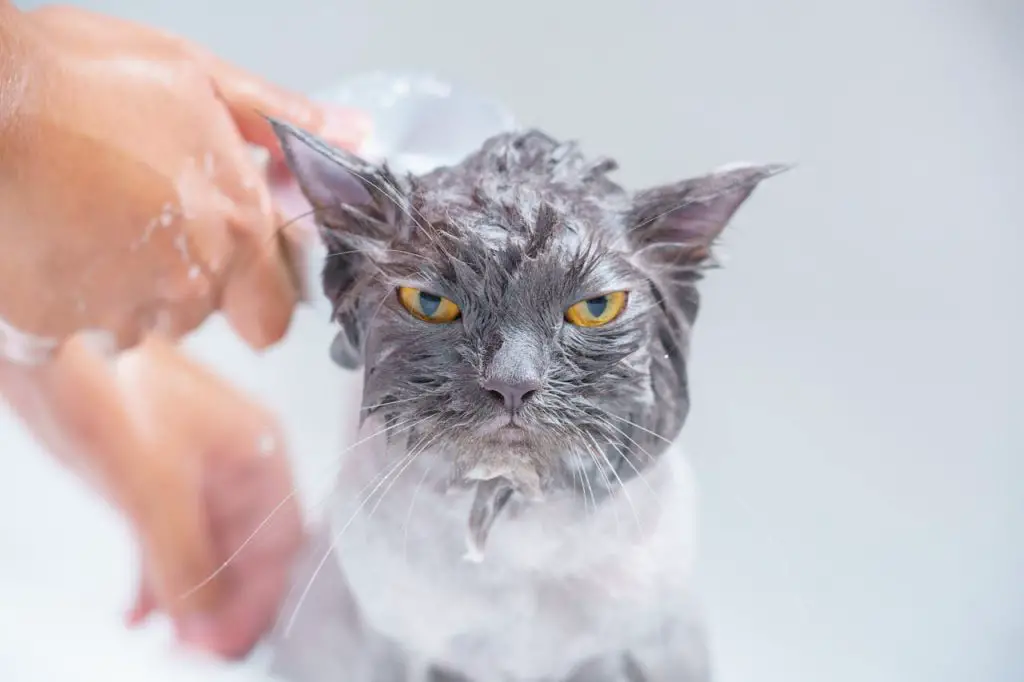
Domestic cats exhibit a strong aversion to cold water due to their sensitivity to temperature extremes, which likely originated from their ancestral adaptations to arid or temperate environments.
You see, their ancestors didn’t need to tolerate cold water to survive, so they developed a strong preference for warmer temperatures.
As a result, your feline friend will likely avoid cold water at all costs.
When it comes to hydration preferences, cats tend to opt for fresh, room-temperature water. Here are some reasons why cold water doesn’t cut it for them:
- Cold shock: Suddenly exposing their skin to cold water can cause stress and discomfort.
- Reduced circulation: Cold temperatures constrict blood vessels, making it harder for their bodies to regulate temperature.
- Discomfort: Cold water can be unpleasant for their sensitive paws and skin.
- Taste: Cats may find the taste of cold water unpalatable.
Uncomfortable Wet Sensations

Water doesn’t only pose a temperature-related issue for cats – its moist sensation can be just as off-putting, given their unique grooming habits and skin sensitivity to humidity, which makes certain wet conditions unbearable for your feline companion.
When your cat gets wet, the sensation can be overwhelming. The moisture can seep into their coat, weighing it down and making every movement feel labored.
This wet sensation discomfort is a major contributor to your cat’s aversion to water.
As you explore feline water behavior, you’ll notice that cats tend to avoid situations where they might get wet, such as taking a bath or walking through puddles.
This is because their skin is highly sensitive to humidity, and the sensation of moisture can be intensely uncomfortable.
In fact, studies have shown that cats have a unique skin structure that makes them more susceptible to wet sensation discomfort than other animals.
By understanding the intricacies of your cat’s sensitivity to wet sensations, you can better appreciate their aversion to water and take steps to minimize their exposure to uncomfortable wet conditions.
Whisker Sensitivity in Cats
As you examine the reasons behind a cat’s aversion to water, you’ll discover that their whiskers play an essential role in detecting their surroundings.
You’ll find that a cat’s whiskers are highly specialized sensors that help them navigate and judge spatial awareness, and their sensitivity to touch and pressure is remarkable.
Whisker Function and Purpose
Cats’ whiskers, also known as vibrissae, play an important role in detecting even the slightest changes in their surroundings, allowing them to navigate through tight spaces and evaluate the width of openings.
You see, whisker mechanics enable your feline friend to gather essential information about their environment. These highly sensitive hairs are embedded deeper in the skin than regular fur, and their bases are surrounded by sensory receptors.
When your cat’s whiskers come into contact with an object or surface, these receptors transmit signals to the brain, helping your cat build a mental map of its surroundings.
This sensory perception is critical for navigation, especially in low-light conditions.
Here are some key functions of your cat’s whiskers:
- Detecting spatial awareness and depth perception
- Evaluating the width of openings and passageways
- Sensing changes in air pressure and temperature
- Detecting the presence of objects or prey
Detecting Water Pressure Changes

Your cat’s whiskers possess exceptional sensitivity, allowing them to detect even the slightest changes in water pressure, which helps explain their aversion to getting wet.
As your cat approaches a body of water, its whiskers can detect the subtlest changes in air pressure, which signals the presence of water.
This unique pressure-sensing ability is due to the specialized nerve endings in the whiskers, called mechanoreceptors.
These mechanoreceptors transmit signals to your cat’s brain, providing essential information about its surroundings.
When your cat comes into contact with water, its whiskers detect the sudden change in pressure, triggering an immediate response.
This pressure-sensing ability is crucial for feline water detection, helping your cat avoid getting wet and maintaining its coat’s integrity.
Your cat’s whiskers play a significant role in its interaction with water. Their sensitivity allows for precise detection of water pressure changes, serving as a critical warning system that enables your cat to navigate its surroundings with ease.
Sensitivity Thresholds in Whiskers
The sensitivity thresholds of feline whiskers play a key role in determining the precise point at which a cat’s pressure-sensing ability triggers a response to water, with research suggesting that even minute changes in air pressure can stimulate the mechanoreceptors in a cat’s whiskers.
You can imagine these whiskers as a highly sensitive sensor array, where each whisker is covered in sensory receptors that detect even the slightest changes in air pressure and temperature.
When a cat approaches water, the changes in air pressure caused by the water’s surface can stimulate these receptors, causing the cat to respond.
Some key points about whisker anatomy and sensitivity include:
- The sensory receptors in cat whiskers are called mechanoreceptors and thermoreceptors.
- Mechanoreceptors detect changes in pressure and vibrations.
- Thermoreceptors detect changes in temperature.
- Whiskers are made of a thick, rigid hair surrounded by sensory receptors.
Understanding the sensitivity thresholds of cat whiskers can help you appreciate the complex sensory system that drives their behavior around water.
Paws and Water Traction
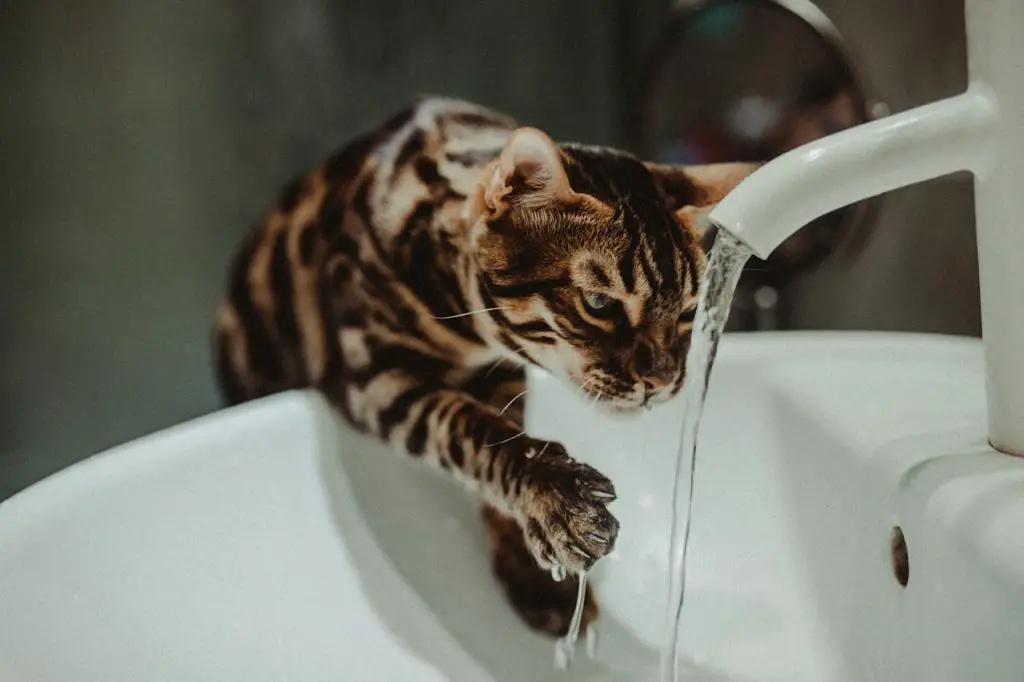
Due to the unique structure and surface properties of their paws, water can severely compromise a cat’s traction, making every step a potentially slippery one.
As you examine a cat’s paw, you’ll notice that the pads are made up of soft, flexible skin that provides excellent grip on dry surfaces.
However, when exposed to water, the skin on their paw pads becomes slippery, reducing the friction between their paws and the ground.
This loss of traction can cause uncertainty and discomfort for cats, making them hesitant to move around in wet environments.
When a cat tries to walk on a wet surface, its paws experience a significant decrease in traction due to the water resistance.
The water fills in the tiny crevices on their paw pads, making it difficult for them to maintain a secure grip.
This sensation is likely to cause stress and anxiety in cats, making them associate water with a sense of unease.
As a result, cats may exhibit avoidance behaviors around water or express reluctance to engage in activities that involve getting their paws wet.
This compromised paw traction plays a significant role in a cat’s aversion to water.
Feline Grooming Habits Affected
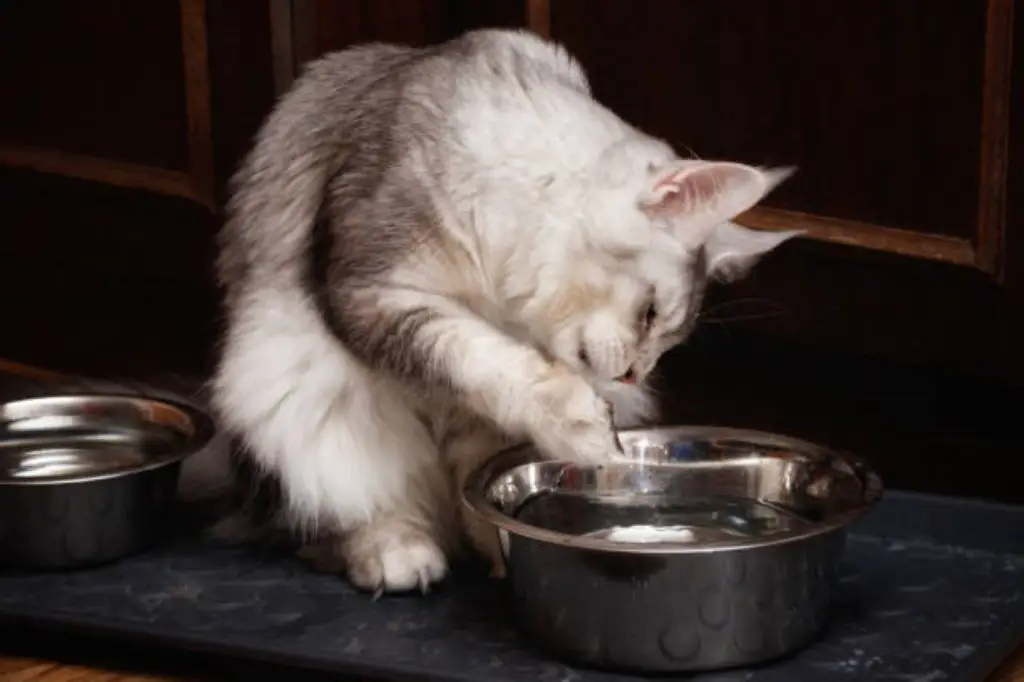
As cats’ paws struggle to maintain traction on wet surfaces, their fastidious grooming habits also face a considerable challenge, since water can severely disrupt the meticulous process of keeping their coats clean and well-maintained.
You see, cats spend a substantial amount of time each day licking, scratching, and nuzzling their fur to remove dirt, parasites, and loose hair.
However, when water enters the equation, their grooming techniques are considerably compromised.
Here are a few ways water affects feline grooming habits:
- Water weighs down their coat, making it harder to lick and groom effectively.
- Excess moisture can lead to skin irritation and infections.
- Wet fur can become matted and tangled, causing discomfort and pain.
- Water can strip their coat of its natural oils, leading to dryness and dandruff.
Exceptions to the Hydrophobic Rule

You’re likely familiar with the stereotype that cats hate water, but it’s not entirely accurate.
Certain breeds, such as the Bengal and Turkish Van, exhibit an unusual affinity for water, challenging the common perception that all cats are hydrophobic.
These breeds seem to enjoy water play, and some even initiate it. You might wonder what sets them apart from their hydrophobic counterparts.
Research suggests that genetics play a significant role in shaping cat behavior, including their relationship with water.
Bengal and Turkish Van cats, for instance, have been bred to retain their natural instincts, which include swimming and playing in water.
This innate predisposition allows them to feel more comfortable around water, even seeking it out for recreational purposes.
Water play has become an integral part of their cat behavior, defying the conventional notion that cats avoid water at all costs.
Frequent Questions
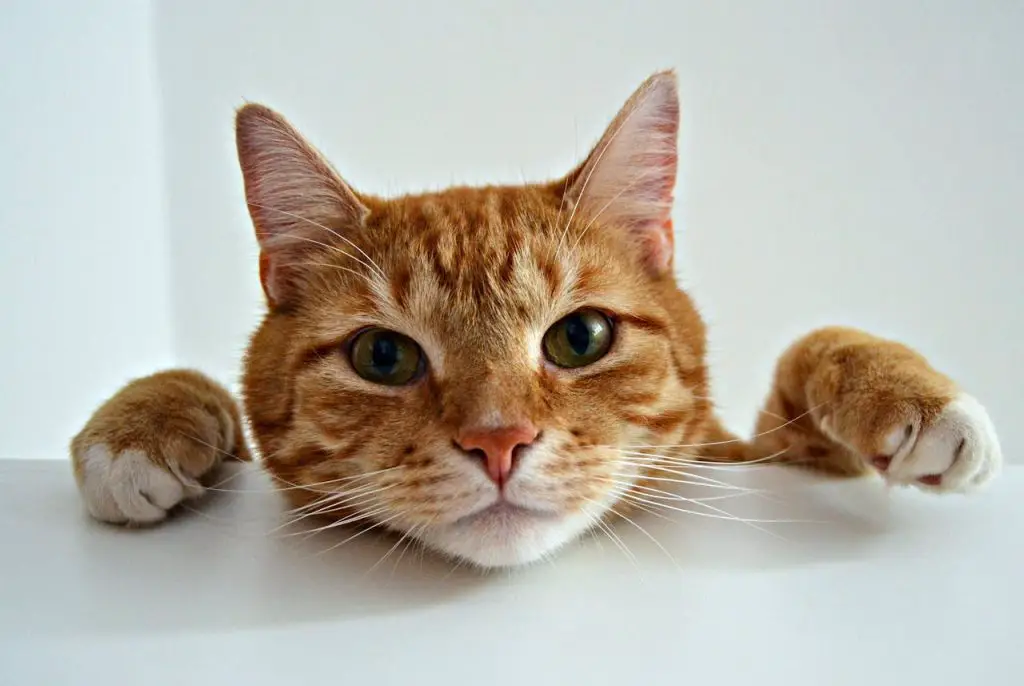
You might be surprised that cats can swim if they need to escape danger, thanks to their survival instincts and natural behaviors. They’ll paddle and stay afloat, but it’s not their preferred activity due to stress and energy expenditure.
Diving into the depths of feline preferences, you’ll find that not all cat breeds have the same aversion to water; breed differences and environmental factors can influence their affinity for H2O, making some cats more hydrophobic than others.
You can help your cat get used to baths by gradually introducing water play and associating it with positive experiences. Start with small steps, such as wetting their paws, to make bath time less stressful.
You’re a million times more curious about your cat’s underwater vision than they are about getting wet. The truth is, cats can see underwater, but their feline anatomy, specifically the structure of their eyes, severely limits their underwater vision.
You can increase a kitten’s tolerance to water through gentle water exposure and early training, starting with small steps such as paw wetting and gradual progression to shallow water, helping them become comfortable with the sensation.
Final Thoughts
You’ve now understood why cats generally hate water.
Curiously, studies show that approximately 70% of domestic cats exhibit stress or avoidance behaviors when exposed to water, highlighting the prevalence of hydrophobia in felines.
The combination of their unique coat structure, sensitivity to temperature extremes, and lack of traction on wet surfaces makes water an uncomfortable experience for most cats, except for certain breeds that deviate from this norm.




